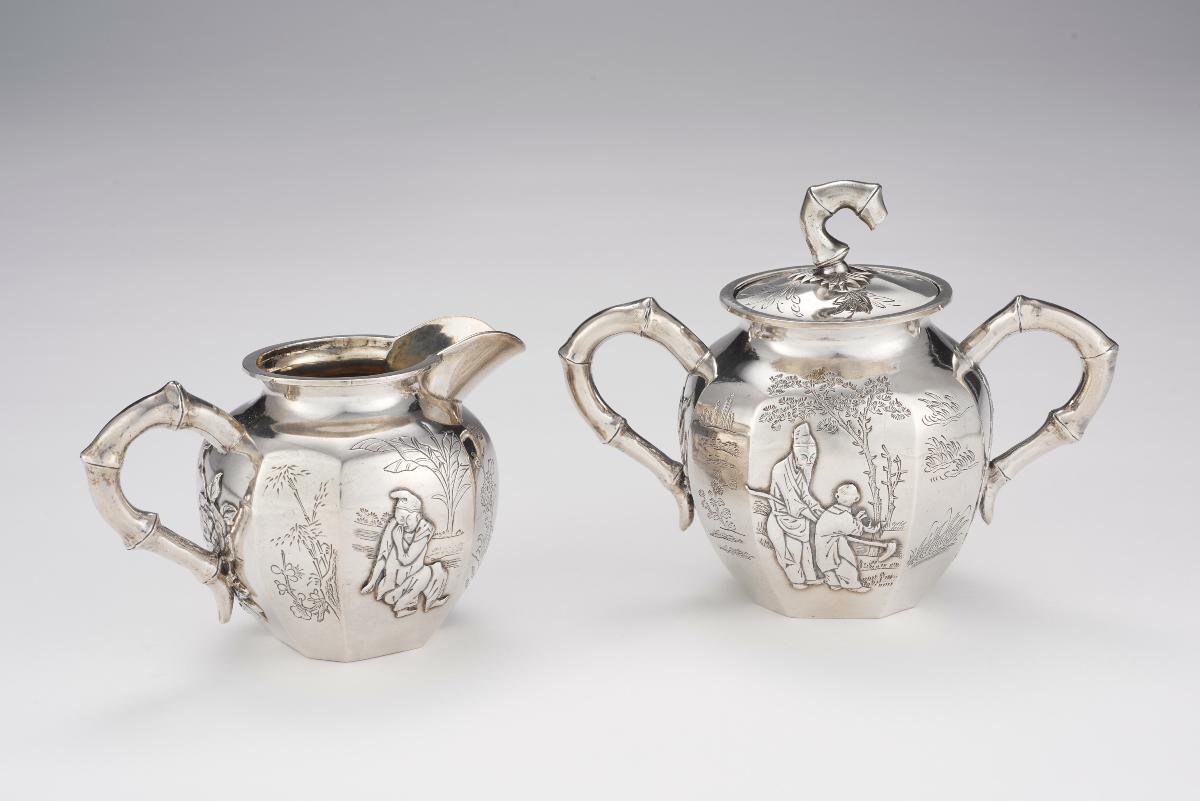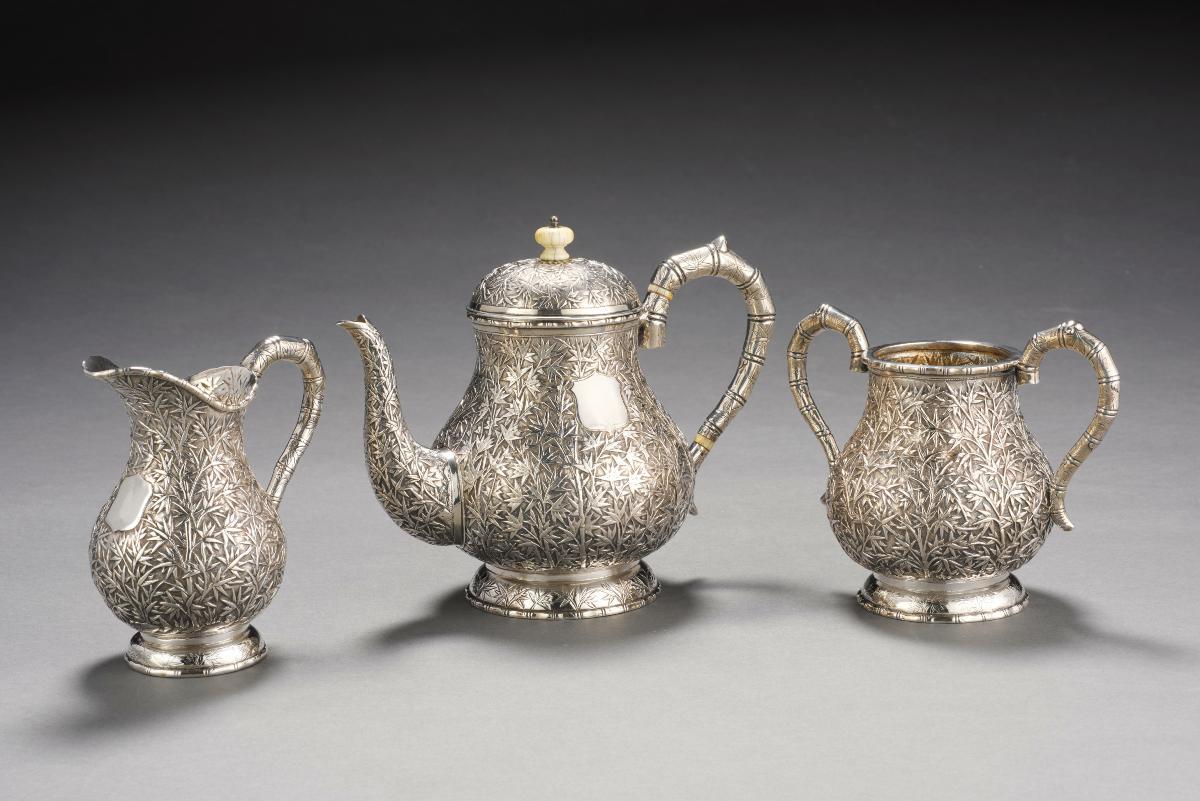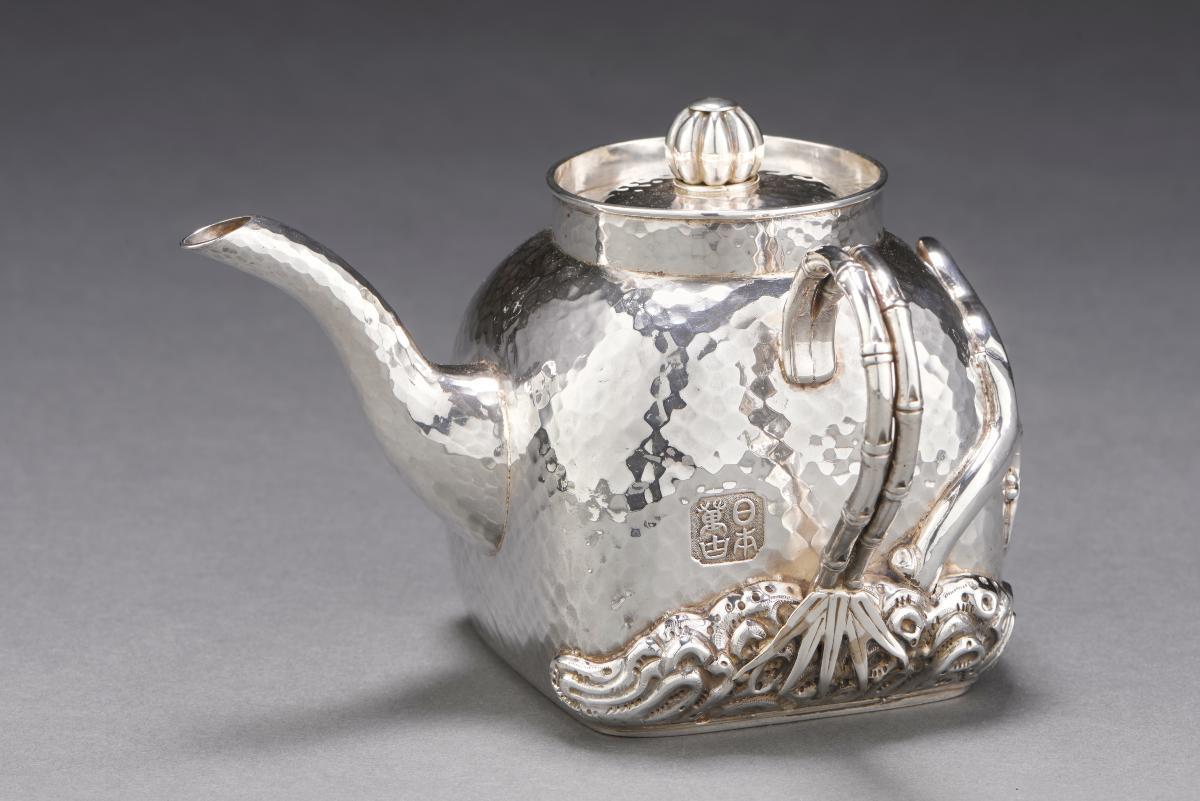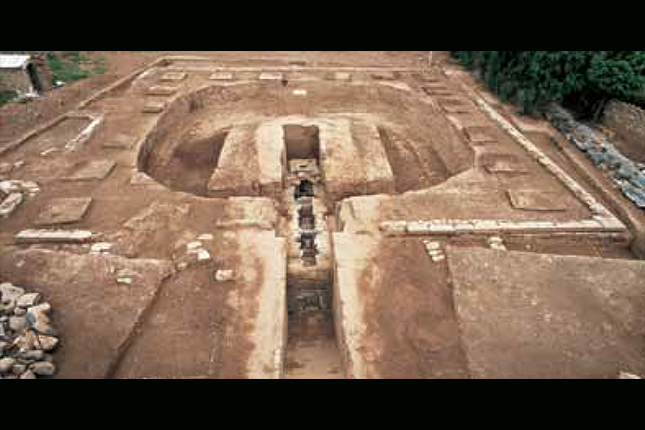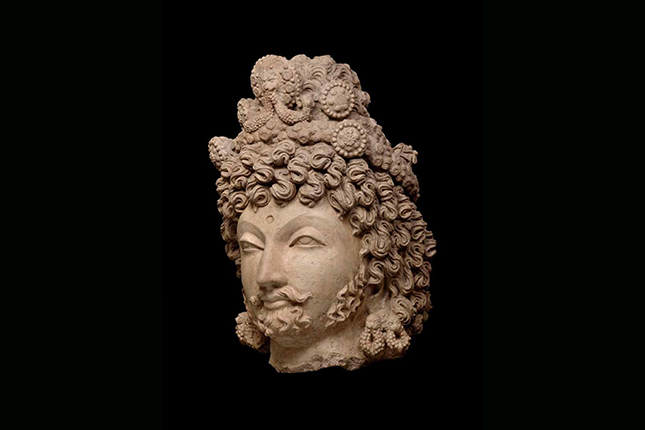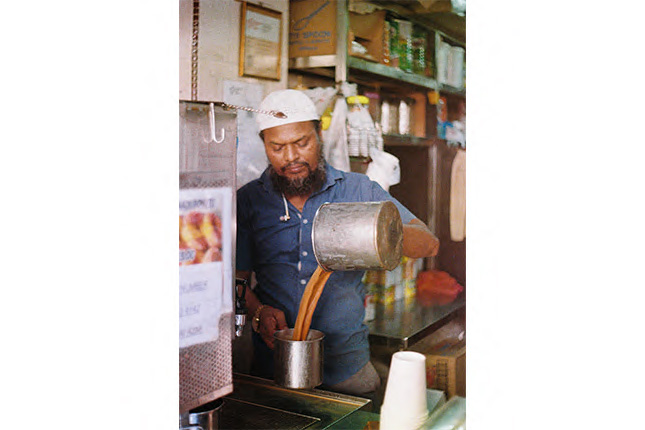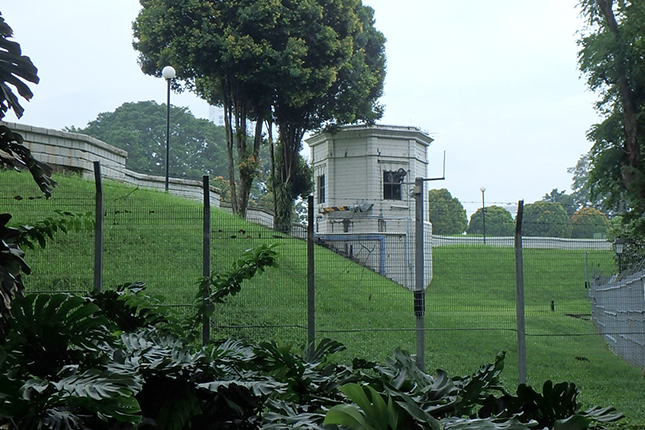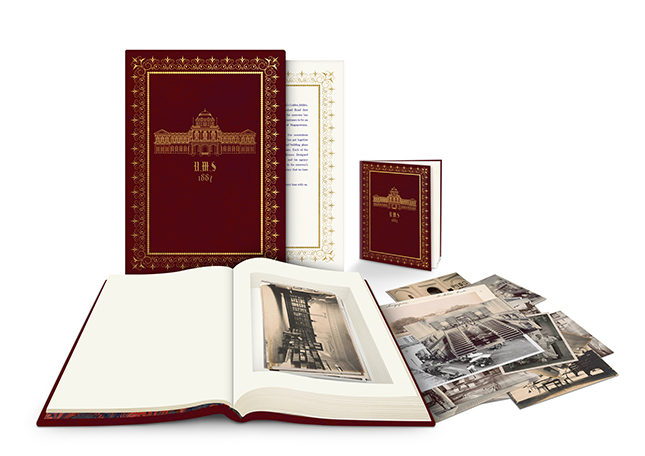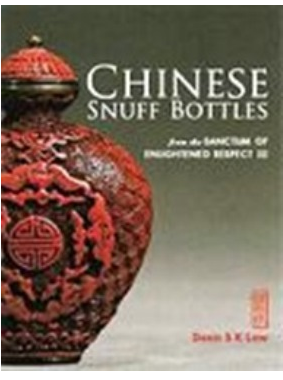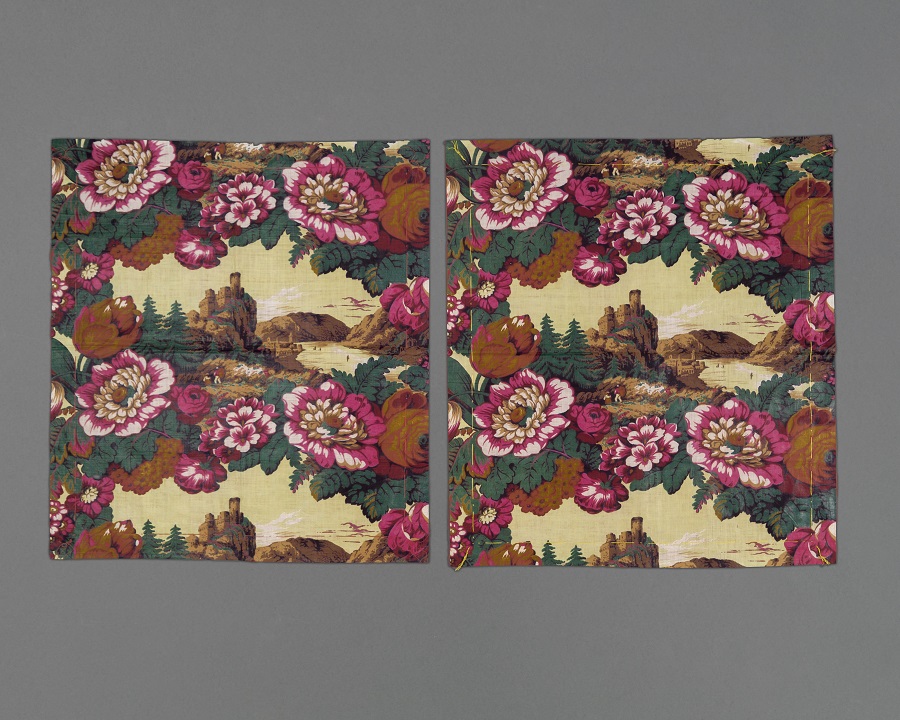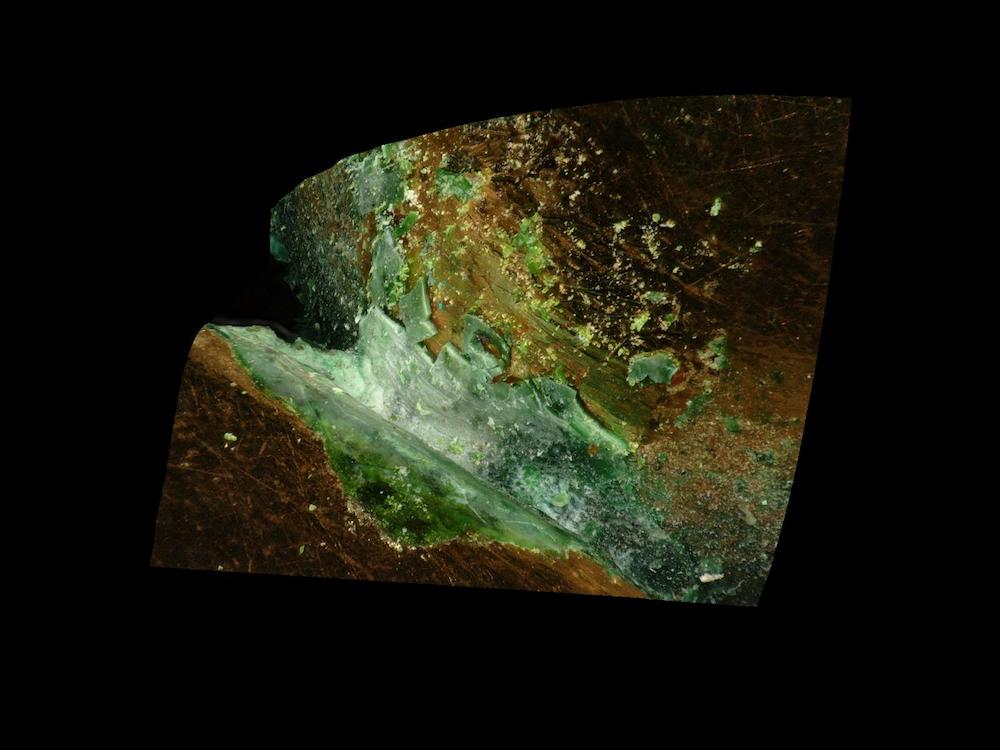Object size: 12.0 x 9.2 cm,
Object size: Refer to parts
The sugar bowl is of an unusual hexagon shape, with applied figures in various pursuits and chased plant motifs on remaining panels. On the sugar bowl is a figure of a bearded elder and a young boy, standing beneath the branches of ancient pine. The corresponding panel on the opposite side depicts a scene of a young girl gesturing to a woman with a fan. The panels nearest to the handles show chased motifs of willow and pine. In Chinese culture, the willow symbolises vitality and strength as the pine tree is commonly used as a symbolism of gentlemen, representing virtues of self-discipline and fortitude.The creamer spots a wide flaring spout and bamboo-form handles. On the creamer is an old man sitting on the ground on one side, flanked by panels of peach blossoms, bamboo, and chrysanthemum. The corresponding panel depicts a scene of a boy with a potted tree in a circular pot, and houses in a distance. The remaining undecorated surfaces of the sugar bowl and creamer enhances the lustrous quality of the metal, so that the basic form of the vessel could be appreciated without distraction. The sugar bowl and creamer are marked “WC” for Wing Chun, a retail silversmith that operated during second half of 19th century in China, Hong Kong.Whole sets of silver flatware and tea sets items were regularly produced from the 18th to mid-20th century. Though earlier pieces tended to imitate European aesthetics and motifs, increased awareness and demand resulted in the introduction of Chinese motifs and decorations. High quality workmanship at a low labour cost added greatly to the demand and appeal for such a market.




